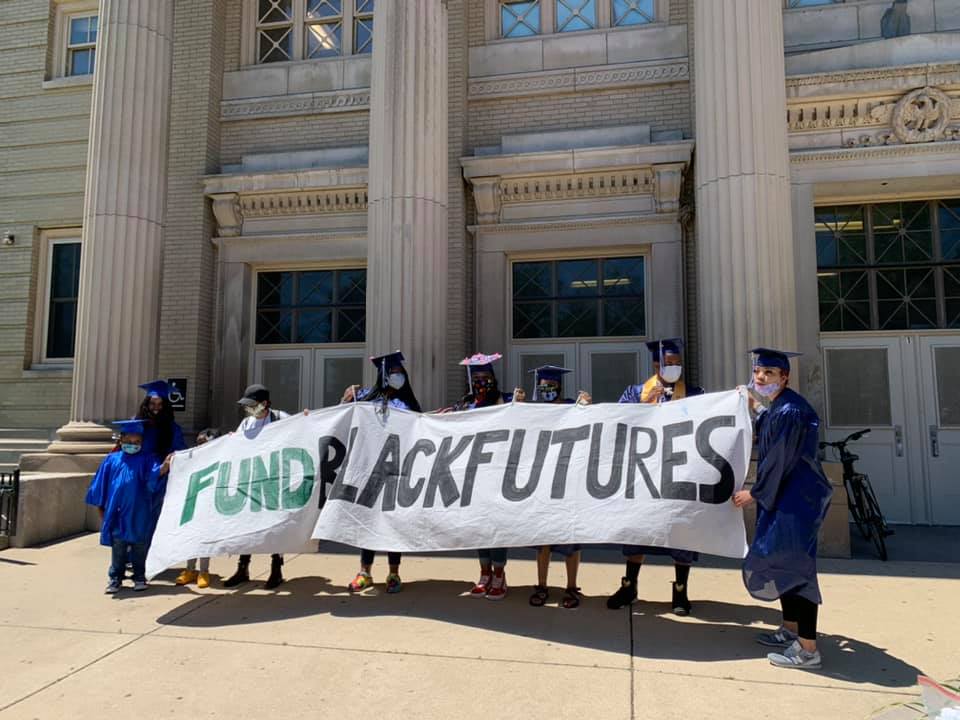This is a guest post written by Lina Bankert and Jeff Schultz, who are partners in the strategic advising practice area at Bellwether Education Partners and lead its postsecondary transitions work.
The U.S. education system was fraught with obstacles for first-generation college students long before the onset of the COVID-19 pandemic. But the path to a college degree has become even more perilous for millions of middle- and low-income students in the last few months.
The gap between students who attain their degree and those who don’t may grow significantly in the next few years. One in five of students who had been planning to start college in the fall may not attend, because of declining family income and uncertainty amid the pandemic. And current high school students are at risk of falling off or never getting onto the path to college.
Some districts and organizations are taking immediate steps. Take Chicago, where the Children First Fund is pivoting resources to support postsecondary success and just-graduated seniors. A Better Chicago is channeling its Emergency Response Grants to provide direct financial assistance to students and to help college advising organizations transition to virtual programming. But policymakers and school leaders in more places must address the immediate pressures while also building a more innovative and tenable college advising solution for the future.
We Need To Hear from High Schoolers Now
First, we must talk to students to understand the economic and home demands students face right now. Many students could drop out of the pipeline before they get to college if the education system doesn’t adapt. Schools are facing more than the typical summer slide: they are facing a summer where too many high school graduates may forgo college and enter into low-wage careers. And it’s not just newly graduated seniors to worry about: This will likely affect students for years to come. By collecting input from students to get a sense of how their lives have changed in the last few months, educators and policymakers can paint a picture of what’s happening across the country and leverage new systems and ideas to create an improved system of support.
Next, those who support students on their postsecondary pathway must adjust their practices. College counselors may need to support students remotely while breaking down both the high barriers to college that have always existed — such as FAFSA completion and accessing scholarship opportunities — and barriers amplified by COVID-19, including ensuring students have financial literacy about their educational choices.
This is no easy feat. American high schools have a dismal guidance counselor-to-student ratio of 478 students to each counselor, and one in five high schools has no counselor at all. Most districts underfund postsecondary support and may have to slash more as the realities of this pandemic hit budgets in the next few years. Philanthropic support and a focus on postsecondary pipelines as integral to a district’s mission can help turn around this reality, and there are already bright spots to look to. College access organizations like Making Waves Foundation in the Bay Area offer virtual help to students, which critical as schools continue to operate remotely. And some districts like DC Public Schools and Chicago Public Schools are taking the lead, with investments in innovating on strategic postsecondary support.
Expand Pell and College Promise Programs
Finally — and critically — students will need increased financial support to pay for higher education, beginning with expanding Pell Grants and college promise programs. College is already expensive, and need-based financial aid has not kept up by any means. (For example: the Pell Grant covered nearly 80% of the cost of a four-year college when it was created in 1965, but it only pays for 30% now.) College costs eat up a much larger portion of a low-income student’s family income than a wealthy student — 157% compared to 14%, according to an Institute for Higher Education Policy study. In the next few years, low-income students will be faced with the choice of foregoing college for working, going to cheaper colleges with far worse student outcomes, or taking on private “bad” debt. None of these options are acceptable.
It’s no secret that a college degree leads to millions more in lifetime earnings compared to a high school diploma. Even in a prolonged economic downturn — like the one the U.S. is on the brink of now — we must ensure that low-income, first-generation college-goers get to and through college and access a pathway that can lead to a stronger financial life.
Students have huge pressures facing them at home right now. This is an opportunity to shift access to the postsecondary pipeline to a system that offers financial help and counseling to ensure that all students can access a high-quality, affordable education and set themselves up for a stronger future.
Digital Team
Latest posts by Digital Team (see all)
- Thanks to His Teacher, Lindblom’s Top 2022 Grad Discovered His Love of Math. Here’s How He’s Paying It Forward. - August 31, 2022
- WEDNESDAY: Join the Day of Action to Get Students Connected to Broadband - March 30, 2021
- Evanston Becomes First City in America to Offer Reparations to Black Residents - March 24, 2021
